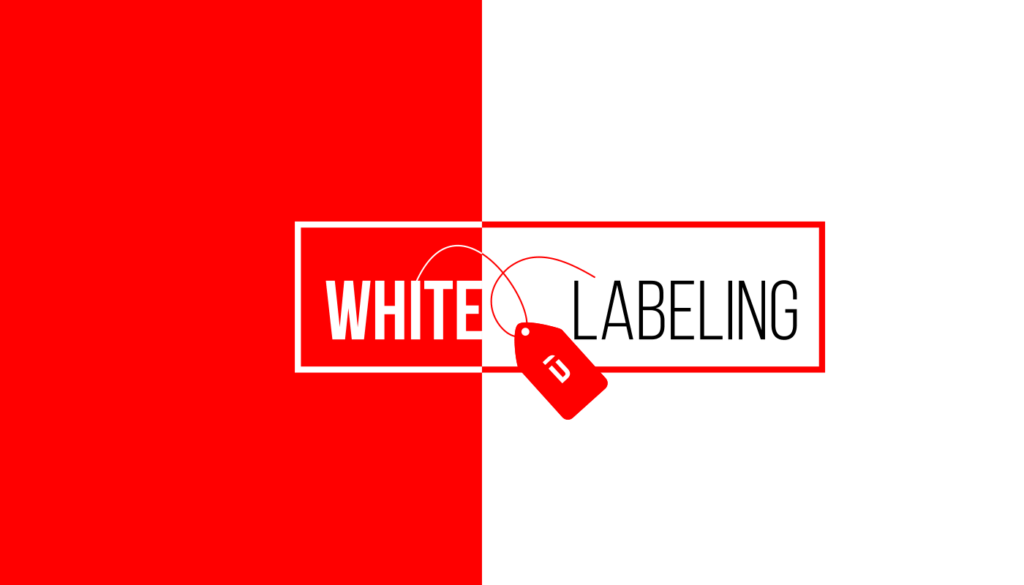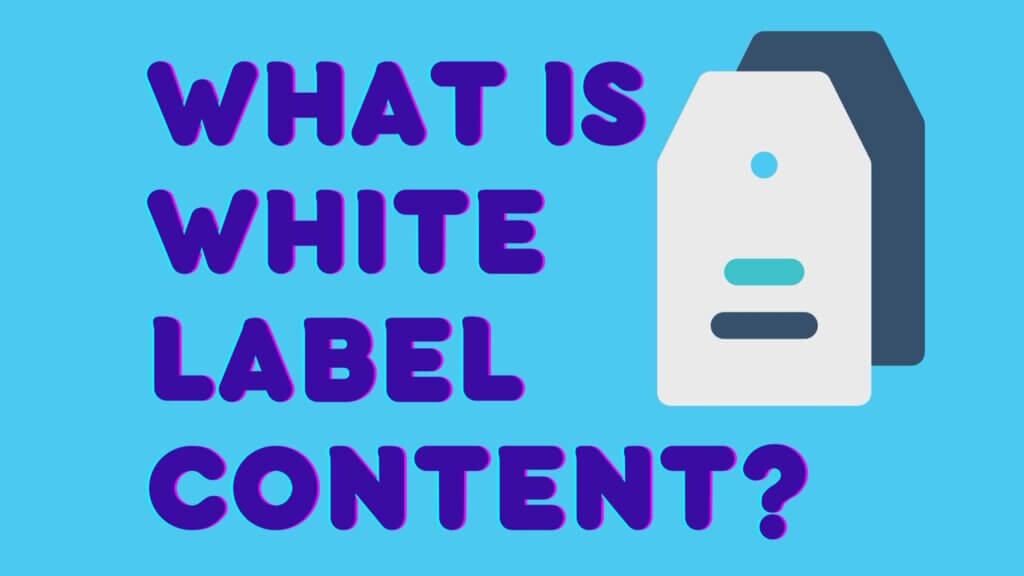White Label Content Creation
Introduction
White-label content creation is a service that has become increasingly popular in recent years, particularly among marketing agencies and companies that don’t have the resources to create their content in-house. In a nutshell, white-label content creation involves outsourcing content creation to a third-party provider who produces the content on behalf of the client without the client’s branding. Instead, the content is branded with the client’s logo and other identifying information, creating the illusion that the client produced the content.
Benefits of White-Label Content Creation
One of the primary benefits of white-label content creation is that it allows companies to focus on their core competencies while still providing high-quality content to their customers. Other benefits include:
- Cost-effectiveness: outsourcing content creation to a third-party provider can be more cost-effective than hiring a full-time content creator or team.
- Time-saving: by outsourcing content creation, companies can save time and focus on other essential tasks.
- Access to expert writers and editors: white label content creation providers typically have a team of expert writers and editors who can produce high-quality content that meets the client’s needs.
- Scalability: white label content creation providers can quickly scale up or down to meet the client’s needs, whether they need a few pieces of content or a large-scale content marketing campaign.
Common Types of White Label Content Creation Services
There are a variety of white-label content creation services that companies can outsource, including:
- Blog posts: regularly updating a blog with high-quality content is a great way to attract and engage an audience.
- Social media content: social media is a powerful marketing tool, and outsourcing social media content creation can help companies maintain a consistent presence online.
- Email marketing content: email marketing is an effective way to nurture leads and convert them into customers, and outsourcing content creation can help ensure that emails are engaging and effective.
- Video content: video is becoming increasingly popular as a marketing tool, and outsourcing video content creation can help companies create professional-looking videos without investing in expensive equipment or software.
- Infographics are a great way to convey complex information visually appealingly, and outsourcing infographic creation can help companies create high-quality visuals that resonate with their audience.
Choosing a White Label Content Creation Partner
Choosing the right white-label content creation partner is crucial to the success of any content marketing campaign. While outsourcing content creation can be cost-effective and time-saving, working with the wrong provider can lead to low-quality content that fails to engage the target audience.
Here are some factors to consider when choosing a white-label content creation partner:
Quality of Work
The provider’s quality of worker should be one of the primary considerations when choosing a partner. The client should evaluate the provider’s portfolio and samples to ensure they deliver high-quality content that meets the client’s standards. Additionally, the provider should have a team of expert writers and editors capable of producing content in the client’s niche or industry.
Price
While cost shouldn’t be the only factor to consider when choosing a white-label content creation partner, choosing a provider offering competitive pricing is essential. When deciding, the client should compare pricing among different providers and consider factors such as the provider’s expertise and quality of work.
Expertise
The provider should have expertise in the type of content the client needs, whether blog posts, social media content, email marketing content, or something else. The client should look for a provider with experience in their industry or niche and a deep understanding of their target audience. Additionally, the provider should be able to adapt to the client’s specific requirements and preferences.
Communication
Clear communication is essential for a successful partnership, so choosing a responsive and communicative provider is crucial. The client should look for a provider that is easy to reach and responds promptly to emails and other messages. Additionally, the provider should be willing to provide regular updates on the content creation progress and be open to feedback and suggestions from the client.
Timeliness
Deadlines are essential in content marketing, so choosing a provider to deliver content on time is critical. The client should ask about the provider’s turnaround time and ensure they can meet the client’s deadlines. Additionally, the provider should have a system for managing deadlines and providing all content is delivered on time.
Reputation
The reputation of the white-label content creation provider should also be considered when choosing a partner. The client should seek a provider with a track record of delivering high-quality content and meeting deadlines. Additionally, the client can look for reviews and testimonials from other clients to get a sense of the provider’s reputation and level of service.
Choosing the right white-label content creation partner is essential to the success of any content marketing campaign. By considering factors such as quality of work, price, expertise, communication, timeliness, and reputation, the client can find a provider that meets their specific needs and helps them achieve their content marketing goals.
Developing a White Label Content Creation Strategy
Developing a white-label content creation strategy is essential to any successful marketing campaign. A well-planned strategy helps to ensure that content is created with specific goals in mind and that it resonates with the target audience. Here are some steps to follow when developing a white-label content creation strategy:
Identify the Target Audience The first step in developing a white-label content creation strategy is identifying the target audience. The client should have a clear understanding of who they are trying to reach and what their needs and preferences are. This information can be gathered through market research, customer surveys, and other methods.
Define Content Goals and Objectives Once the target audience has been identified, the client should define their goals and objectives. This involves setting specific, measurable goals that align with the overall marketing strategy. For example, the client may want to increase brand awareness, generate leads, or drive traffic to their website.
Choose the Right Types of Content The next step in developing a white-label content creation strategy is to choose the types of content that will resonate with the target audience and help achieve the client’s goals. This could include blog posts, social media, email marketing, video, infographics, and more. The client should consider the preferences and habits of their target audience when choosing the types of content to create.
Develop a Content Calendar Once the types of content have been chosen, the client should develop a content calendar. This involves mapping out the content creation process and setting deadlines for each piece of content. A content calendar helps to ensure that content is created consistently and on time, which is essential for a successful content marketing campaign.
Manage the Content Creation Process
Finally, the client should manage the content creation process to ensure everything runs smoothly. This involves working closely with the white-label content creation provider to ensure that content is created to the client’s specifications and meets their quality standards. The client should also provide feedback and suggestions to the provider and be open to making adjustments as needed.
Developing a white-label content creation strategy is essential to any successful marketing campaign. By identifying the target audience, defining content goals and objectives, choosing the suitable types of content, developing a content calendar, and managing the content creation process, the client can ensure that their content resonates with their audience and helps them achieve their marketing goals.
White Label Content Creation Best Practices
White-label content creation has become increasingly popular among marketing agencies and companies in recent years. While outsourcing content creation can be a cost-effective and time-saving solution, it’s essential to follow best practices to ensure that the content is high-quality and effective. Here are some best practices for white-label content creation:
Creating High-Quality Content
One of the primary goals of white-label content creation is to produce high-quality content that engages the target audience. To achieve this goal, the following best practices should be followed:
- Conduct thorough research on the topic and target audience
- Use a clear and concise writing style
- Incorporate multimedia elements such as images and videos
- Write content that is optimized for search engines
Optimizing Content for SEO
Search engine optimization (SEO) is an essential factor in content marketing, and content should be optimized for search engines to increase visibility and drive traffic to the client’s website. The following best practices should be followed:
- Conduct keyword research to identify relevant keywords and phrases
- Use keywords in the content, including the title, meta description, and headings
- Use internal and external links to improve the content’s authority
- Optimize images and videos with alt tags and relevant keywords
Promoting Content Through Social Media
Social media is a powerful tool for promoting content and engaging with the target audience. The following best practices should be followed:
- Choose the right social media platforms based on the target audience and content type
- Use eye-catching visuals and headlines to attract attention
- Post content regularly and at the correct times
- Engage with the audience by responding to comments and messages
Measuring and Analyzing Content Performance
Measuring and analyzing content performance is crucial to understanding what works and what needs improvement. The following best practices should be followed:
- Set specific goals and metrics to track, such as traffic, leads, or conversions
- Use analytics tools to track and analyze content performance
- Regularly review and adjust content based on performance data
- Use performance data to inform future content strategy
Making Adjustments and Improvements
Even the most well-planned content strategy may need adjustments and improvements over time. The following best practices should be followed:
- Continuously monitor and evaluate content performance
- Use feedback from the audience and the client to improve content quality
- Stay up-to-date with industry trends and changes to optimize content strategy
- Be open to making changes and adjustments as needed
Following best practices for white-label content creation is essential to creating high-quality, compelling content that resonates with the target audience and achieves marketing goals. By creating high-quality content, optimizing for SEO, promoting through social media, measuring and analyzing performance, and making adjustments and improvements, white-label content creation can be a successful strategy for marketing agencies and companies.
Challenges and Solutions
White-label content creation has become a popular solution for marketing agencies and companies that want to provide high-quality content to their clients without investing in content creation resources themselves. However, there are still some challenges that can arise when working with a third-party provider. Here are some common challenges and solutions for white-label content creation:
Common Challenges in White-Label Content Creation
- Quality control: Ensuring the content meets the client’s quality standards can be challenging when working with a third-party provider.
- Communication: Clear communication is essential for a successful partnership, but it can be challenging to communicate effectively with a third-party provider.
- Deadlines: Meeting deadlines is essential in content marketing, but the provider may struggle to meet the client’s deadlines.
- Brand voice: Maintaining a consistent voice can be challenging when outsourcing content creation to a third-party provider.
- Accountability: When outsourcing content creation, it can be challenging to hold the provider accountable for the quality of their work.
Solutions to Overcome Challenges
- Quality control: To ensure that the content meets the client’s quality standards, the client should provide detailed guidelines and expectations to the provider. Additionally, the client can request samples or test articles to evaluate the provider’s quality of work.
- Communication: The client should establish clear lines of communication with the provider and set expectations for how often and through what channels they will communicate. Regular check-ins and status updates can help ensure everyone is on the same page.
- Deadlines: The client should set clear deadlines and milestones for the provider and follow up regularly to ensure they are on track to meet them. The provider should also have a system for managing deadlines and providing they ensure provided on time.
- Brand voice: The client should provide the provider with a style guide or other documentation that outlines their brand voice and messaging. Additionally, the client can review and edit content before it is published to ensure that it aligns with their brand voice.
- Accountability: The client should include specific quality standards and expectations in their contract with the provider. Regular performance evaluations and check-ins can help ensure the provider meets the client’s expectations.
Managing Client Expectations
Managing client expectations is one of the biggest challenges in white-label content creation. The client may have unrealistic expectations about the quality or quantity of content that can be produced within a given timeframe or budget. To manage client expectations, the provider should be transparent about what is possible within the given constraints and communicate any potential issues or delays as soon as they arise. Additionally, the client should be educated about the content creation process and the time and resources required to produce high-quality content.
While white-label content creation can be a cost-effective and time-saving solution for marketing agencies and companies, challenges can still arise. By implementing solutions such as setting clear guidelines and expectations, establishing clear communication, and managing client expectations, white-label content creation can be a successful strategy for producing high-quality content that resonates with the target audience and achieves marketing goals.
Conclusion
White-label content creation has become an increasingly popular solution for marketing agencies and companies that want to provide high-quality content to their clients without investing in content creation resources themselves. Companies can save time and money by outsourcing content creation to a third-party provider while delivering compelling content to their audience.
However, white-label content creation is not without its challenges. Ensuring quality control, maintaining a consistent brand voice, and managing client expectations are all critical factors when outsourcing content creation. Clear communication, well-defined guidelines, and regular check-ins can help overcome these challenges and ensure that the content meets the client’s expectations.
Despite the challenges, white-label content creation offers numerous benefits. It allows companies to focus on their core competencies while providing high-quality content to their audience. Additionally, white-label content creation providers often have a team of expert writers and editors who can produce content that resonates with the target audience.
When choosing a white-label content creation partner, companies should consider factors such as quality of work, price, expertise, communication, timeliness, and reputation. Companies can ensure their content marketing campaign succeeds by choosing a provider that meets their needs.
Developing a precise content creation strategy is also essential to the success of a white-label content creation campaign. This involves identifying the target audience, defining content goals and objectives, choosing suitable types of content, and managing the content creation process.
In conclusion, cheating-label content can be cost-effective and time-saving for marketing agencies and companies. By following best practices such as creating high-quality content, optimizing for SEO, promoting through social media, measuring and analyzing performance, and making adjustments and improvements, white-label content creation can be a successful strategy for producing high-quality content that resonates with the target audience and achieves marketing goals.
FAQs
What is white-label social media content?
White-label social media content refers to social media posts, graphics, and other content created by a third-party provider that can be branded and repurposed by a company or agency as their own. White-label social media content allows companies and agencies to provide high-quality, engaging content to their social media audience without investing in content creation resources themselves. The provider creates the content and then rebrands it with the client’s branding, messaging, and voice, making it appear that the client initiated the content in-house. This allows companies and agencies to focus on their core competencies while maintaining a solid social media presence.
Is white labeling illegal?
No, white labeling is not illegal. White labeling is a standard business practice that is used in many industries. White labeling refers to a business arrangement where a product or service is produced by one company and sold under another company’s brand name. This allows the company selling the product or service to take advantage of the other company’s expertise, resources, and reputation. White labeling is a legal and legitimate way for businesses to offer their customers a broader range of products and services without investing in new resources or expertise. However, it is essential for both parties involved in a white labeling agreement to understand the terms and expectations of the partnership clearly.






